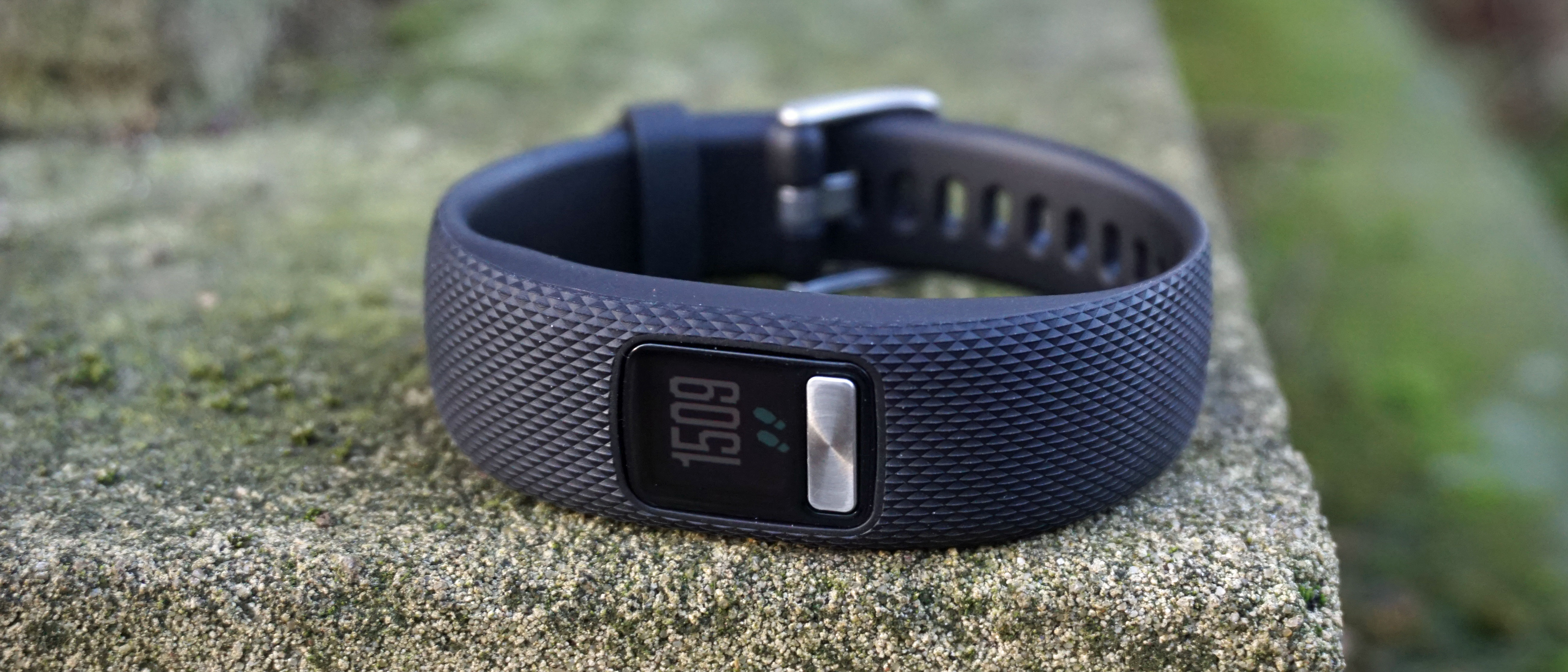TechRadar Verdict
The Garmin Vivofit 4 introduces a color screen to the range, improves the design and comfort as well as offering unbeaten battery life. This won't suit those looking for lots and lots of fitness tracking features, but for the basics the Vivofit 4 is a great for your wrist.
Pros
- +
Incredible battery life
- +
A color screen
- +
Low price
Cons
- -
No GPS or heart rate
- -
Lacks phone notifications
- -
Sometimes difficult interface
Why you can trust TechRadar
Looking for a fitness band that will track your basic activity? Garmin thinks the Vivofit 4 will be the perfect product for your wrist, but there's tough competition in this space from the likes of the Moov Now, Fitbit Alta HR and countless other brands that want to guide you to improved fitness.
Despite the Vivofit 4 having a color screen, Garmin claims its battery – it's a regular watch battery which you replace, so you never have to worry about recharging – will last you a whole year.
That means you don't have to remove your tracker at night and worry about running out of charge before you hit the gym, but there are also lots of other things to like about the Vivofit 4.
Garmin Vivofit 4 release date and price
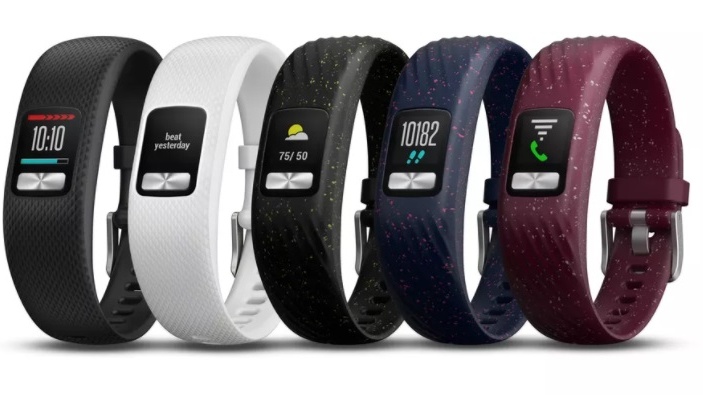
The Garmin Vivofit 4 launched late in 2017 and has been on sale since early in 2018. You can now buy it from a variety of third-party sellers as well as Amazon itself.
The launch price was $79.99 / £69.99 / AU$159 and it’s same price no matter if you buy the small or large version of the fitness tracker. The price has dropped a little with us seeing it hit £59.99 in the UK and a little bit below $80 in the US.
That price is around what we’d expect for a fitness tracker of this type, considering similar products such as the Fitbit Charge 2 currently cost around £90 / $130 and the Moov Now (which doesn’t come with a screen) has an RRP of around £50 / $60 / AU$79.
Design and display
The Vivofit 4 is noticeably thinner than previous Garmin products, meaning it takes up less room on your wrist and is a touch lighter too. For that reason it's a comfortable wear. We found the plastic strap material - the only option you have with the Vivofit 4 - was easy to clean off after a sweaty run.
Garmin has provided a particularly secure strap on the Vivofit 4 that means it shouldn't go flying about your wrist either. There's both a large and a small/medium size, and while we tried the smaller option (which is perhaps a bit too small for our reviewer's wrist) it was still a comfortable fit.
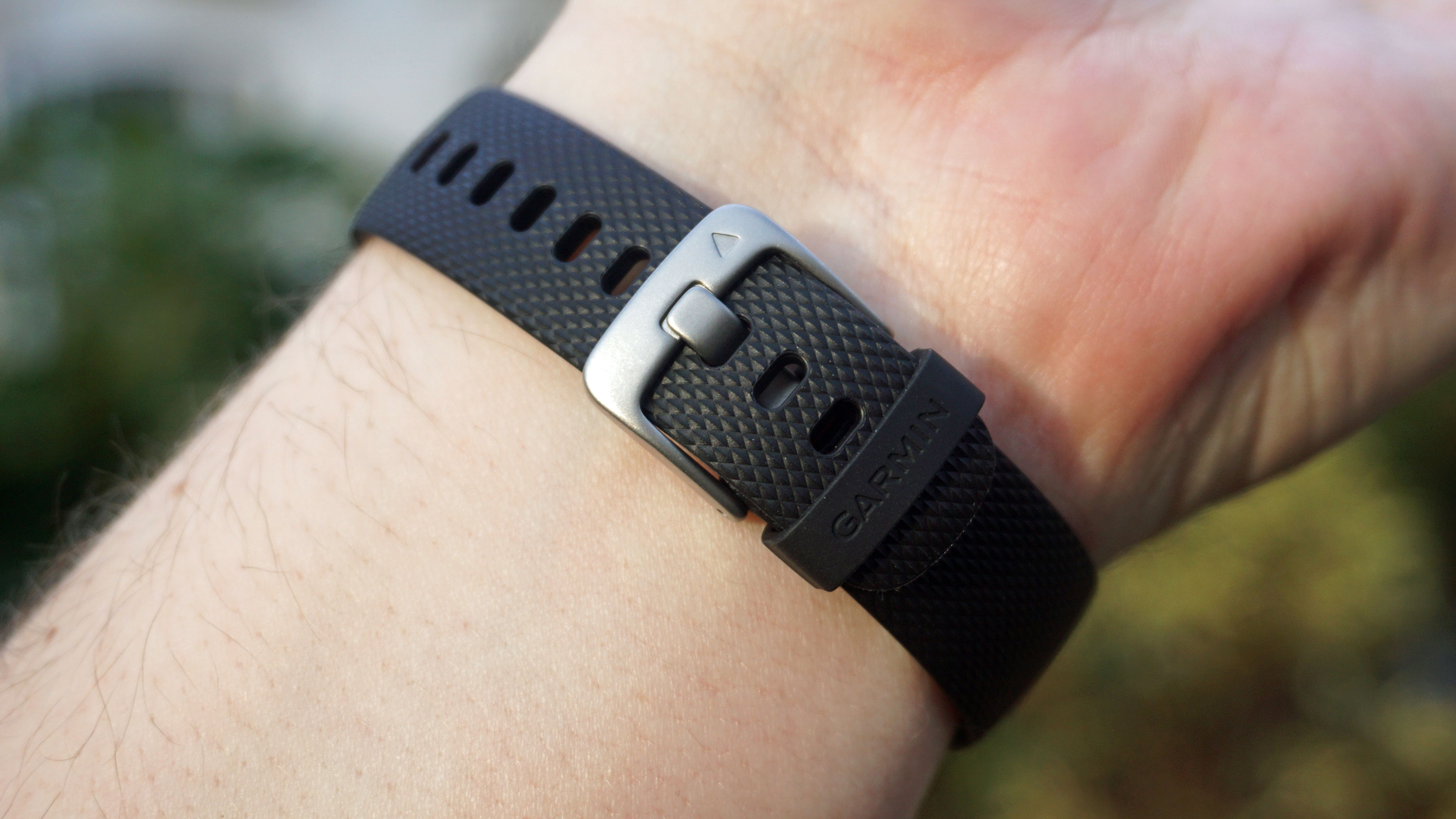
The silicone material may not look that premium and won’t be your choice of look to match with some particularly nice formal wear, but it does feel comfortable when you’re working out and when worn for long periods of time.
The Vivofit 4 is also attractive for a fitness tracker and its smaller size means it’s better looking than some larger, bulky wristwear.
Color-wise you've got the choice of plain black or white straps, while there's also blue, black and purple versions with a speckled effect on them. We really like the speckled effect as it looks different to other fitness trackers that usually just have a solid color design.
These don’t cost any more either, so if you don’t like the plain black or white versions we’d recommend looking out for those snazzier options. Garmin also doesn’t provide other materials, so it’s worth noting you won’t be able to buy an official leather strap for more formal occasions like you can with some smartwatches.
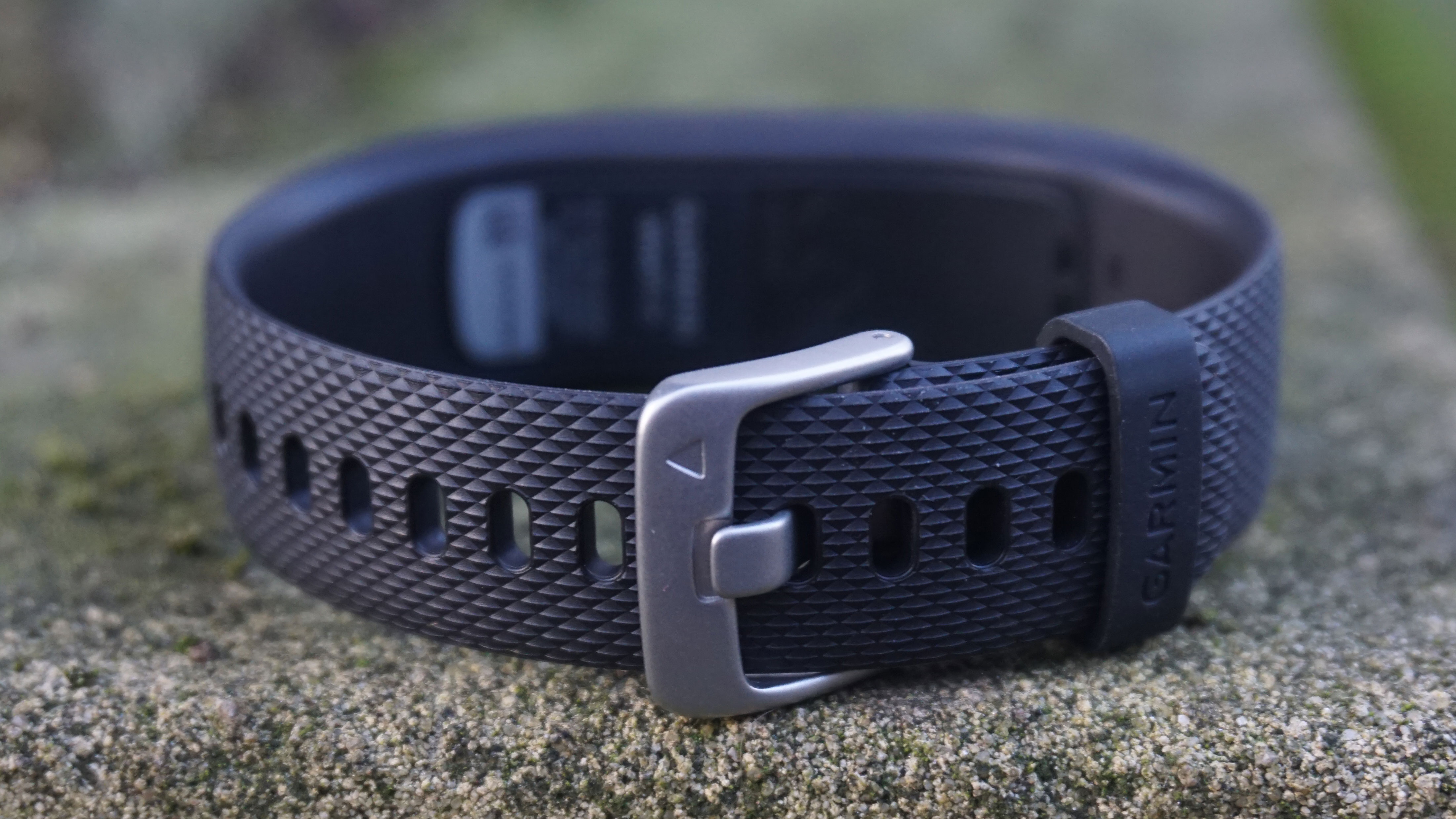
There isn’t much on the tracker itself – and that’s one of the Vivofit 4’s strengths. You can pull the Vivofit 4 out of its strap from behind so you can switch straps, but apart from the color display and button on the front there isn’t any other way to interact with it.
That makes this a largely easy device to use. The button below the screen will cycle through all the options you have on there including things like your step count for the day, the time, the weather, calories burned and distance traveled, but for anything more than that you’ll need to head into the app on your phone.
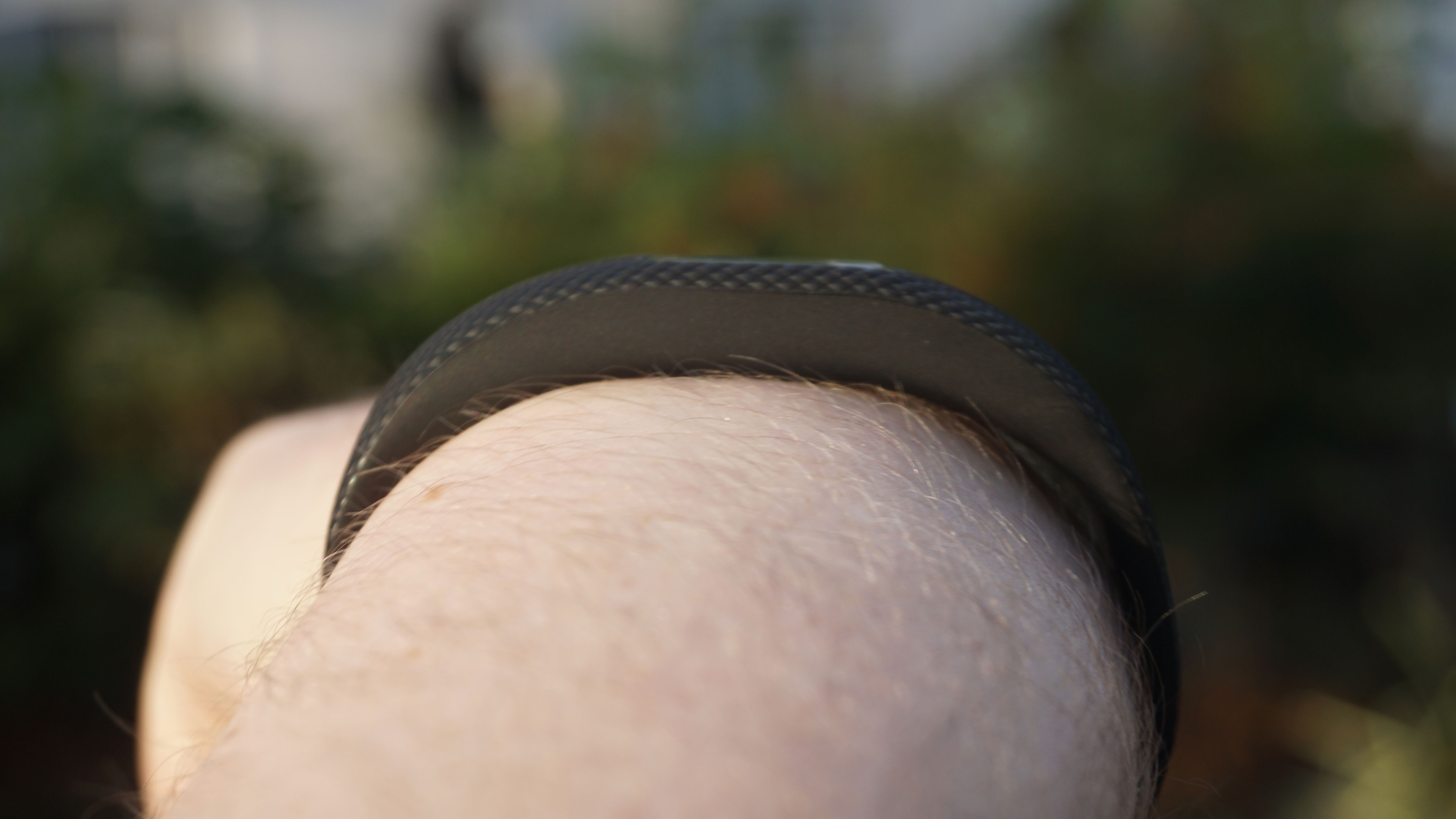
Don’t expect any sort of control of your phone direct from your wrist either. There’s no touchscreen here and instead you will hold down a button to start up an exercise routine.
It’s an 11mm x 11mm display, so this is even smaller than the display you get on the Fitbit Charge 2. It’s designed to show you the time and whether you’re working out, but it’s not like a proper running watch where you can see detailed live stats.
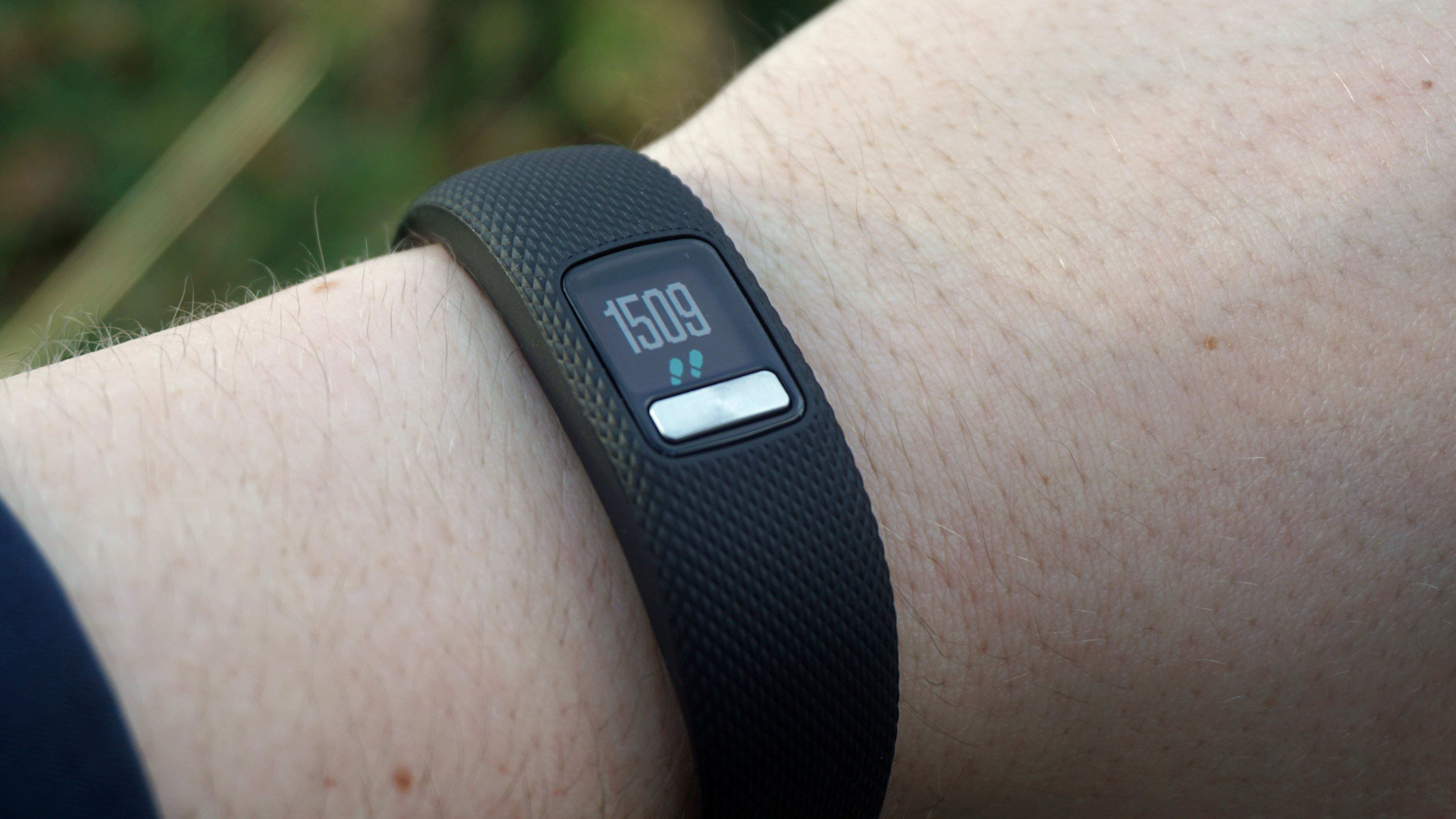
The resolution is 88 x 88 pixels, but the quality is clear and the fact it’s in color means it adds a slight amount of vibrancy to the menus you can see. If you’re using the watch element at night, you’ll need to hold down the button for a second for the backlight to kick in.
That’s useful for saving battery, but we found it a little irritating when you just want to quickly look at your wrist to have a look at the time.
It’s the first time a Vivofit device has included an always-on display, and as long as you’re in clear lighting it’s much more useful if you want to use this in a similar way to a watch.
You can change the watch face here too, and while the options you’ve got are limited it adds a slight element of personalization you don’t often see on fitness trackers at this price point.
It means you can choose your own watch face color and tailor it to your style a little more, even though it’s probably only you who’ll look at the watch face on your wrist.
- Find the best deals on Garmin products with our Garmin promo codes.
James is the Editor-in-Chief at Android Police. Previously, he was Senior Phones Editor for TechRadar, and he has covered smartphones and the mobile space for the best part of a decade bringing you news on all the big announcements from top manufacturers making mobile phones and other portable gadgets. James is often testing out and reviewing the latest and greatest mobile phones, smartwatches, tablets, virtual reality headsets, fitness trackers and more. He once fell over.
